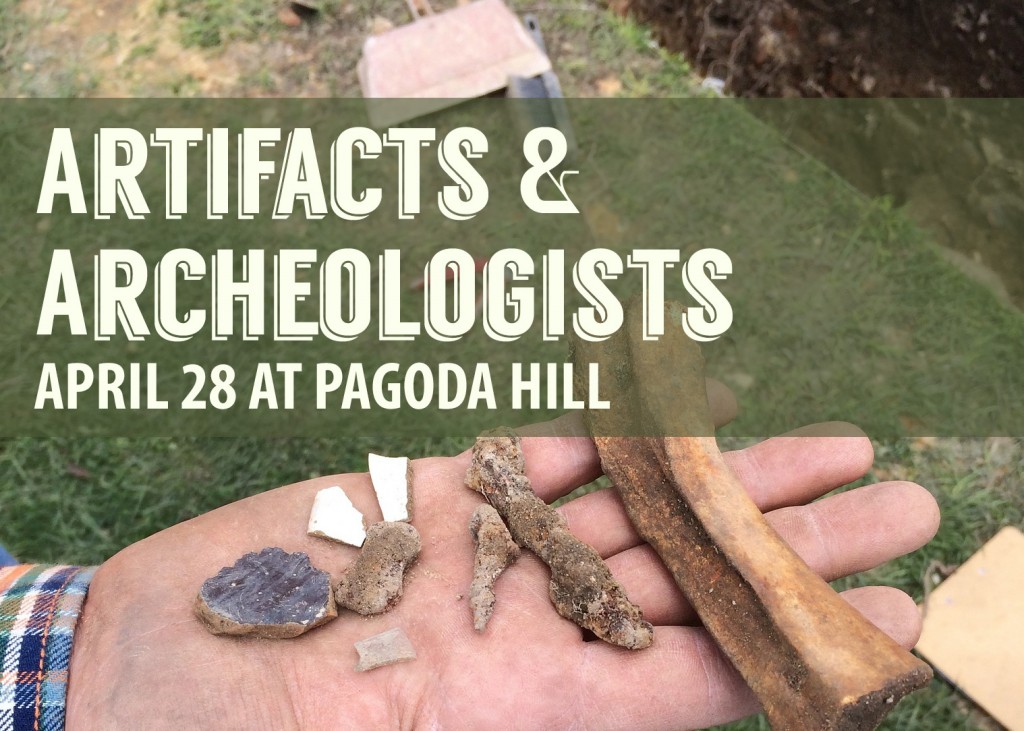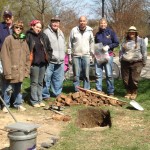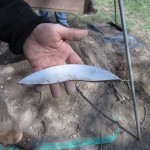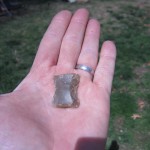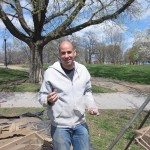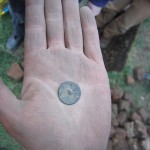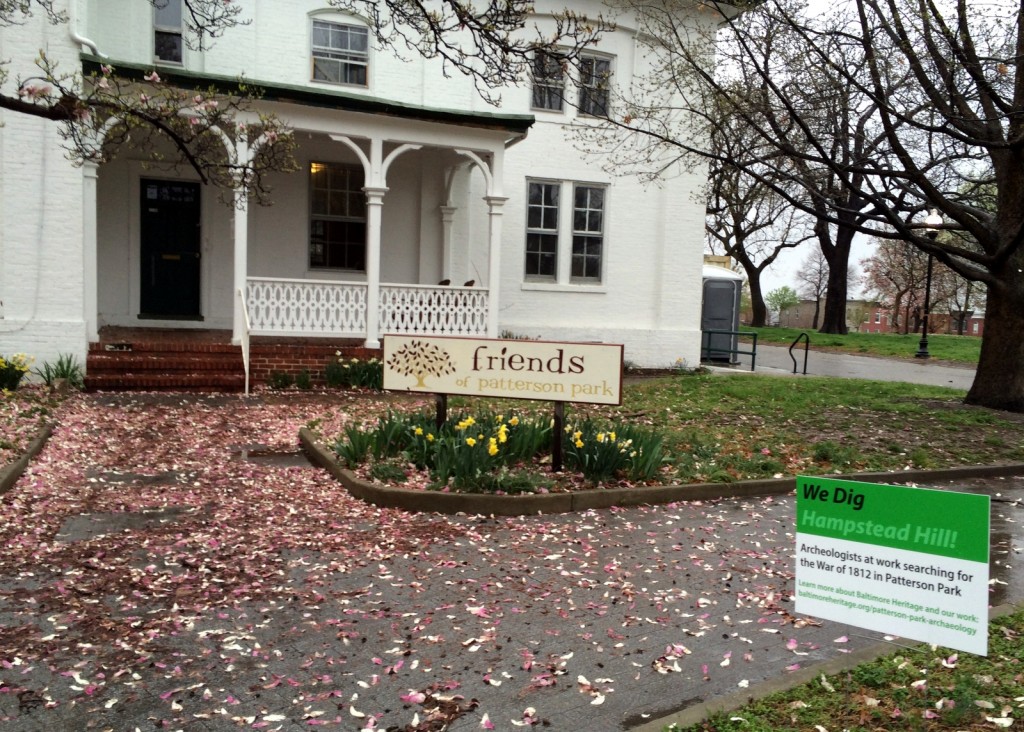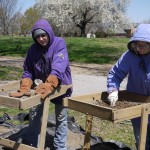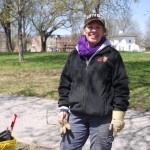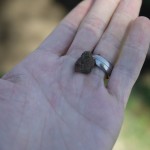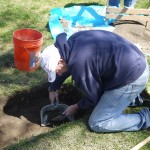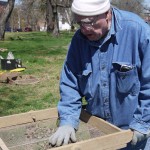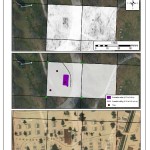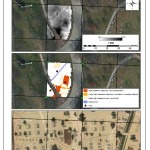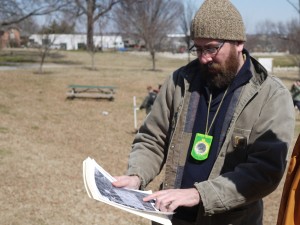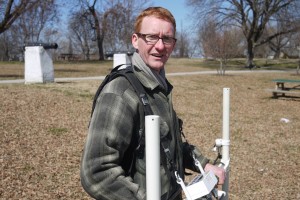This spring weather is perfect for picnics, bike rides, and, of course, archeology! Next week, you can find Baltimore Heritage in Patterson Park for Archeologists and Artifacts—a pop-up exhibit showcasing archeological collections from Carroll Park, Patterson Park, Herring Run Park, and the forgotten town of Texas, Maryland.
If you came out for a site tour during our Hampstead Hill dig last spring, please join us to see the artifacts we recovered from the Battle of Baltimore, the Civil War and beyond. If you volunteered on our 2014 dig and can’t wait to get your hands dirty again, this informal social is the perfect opportunity to meet local archeologists and learn more about projects where volunteers can get involved.

Next month, we are continuing our archeological investigation in Herring Run Park in partnership with the Northeast Baltimore History Roundtable, Friends of Herring Run Parks and the Baltimore City Department of Recreation and Parks. Initial research last fall uncovered some exciting finds that help reveal the early history of Eutaw Farm – better known today as the area of Hall Springs. A generous grant from Preservation Maryland’s Heritage Fund program is supporting our return to the park in May for a week-long investigation led by local archeologists Jason Shellenhamer and Lisa Kraus.
Read our last update about the Herring Run Park project, sign up to volunteer and save the date of May 16 and May 17 for our open house weekend at the dig.

